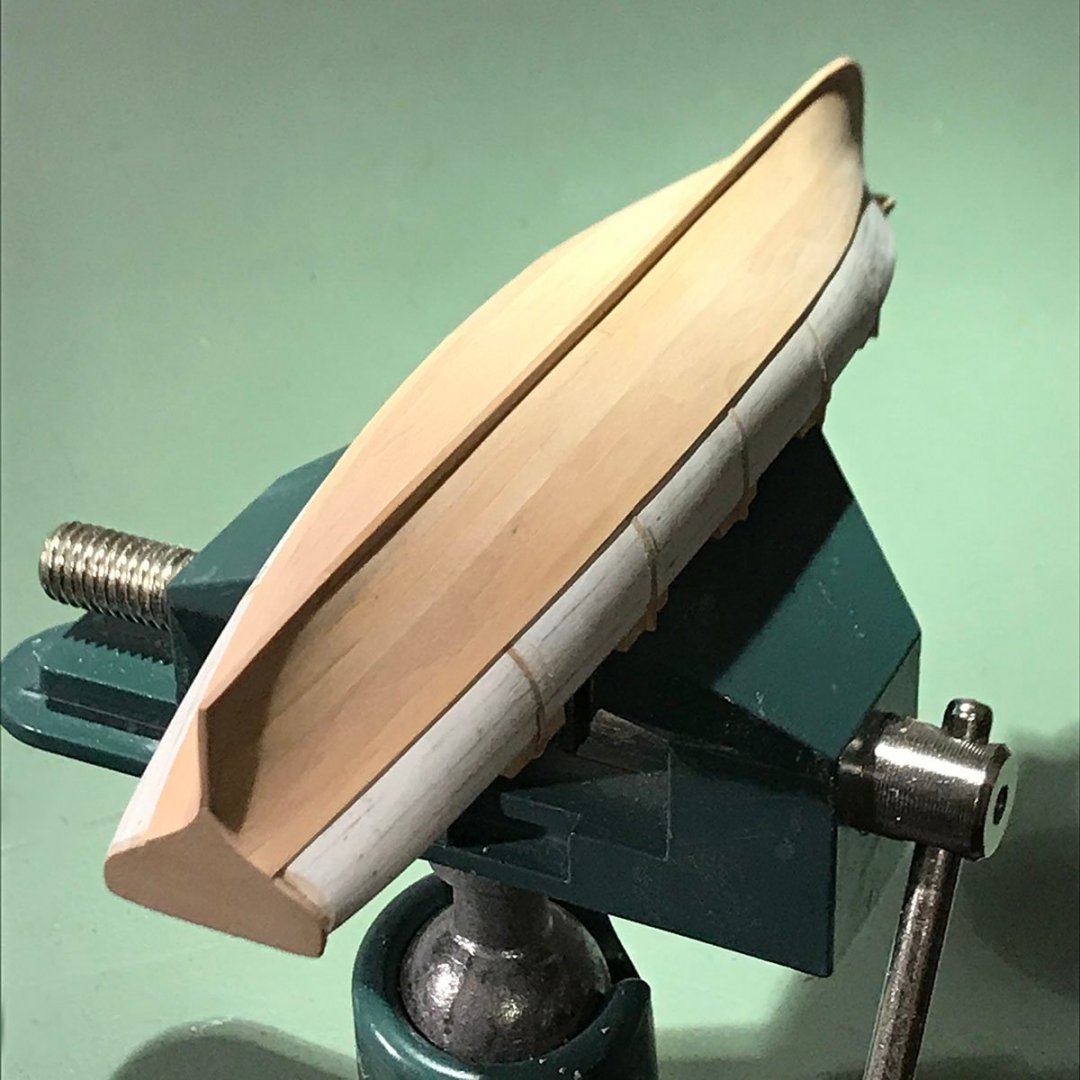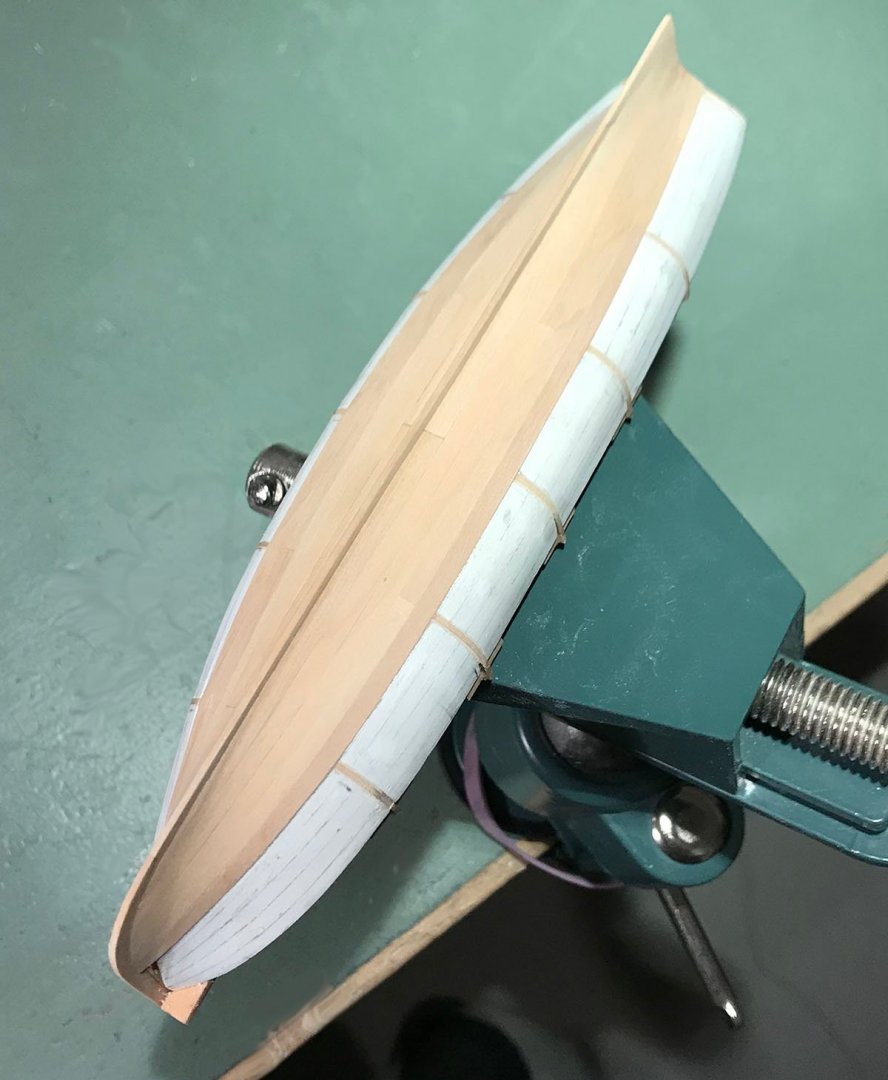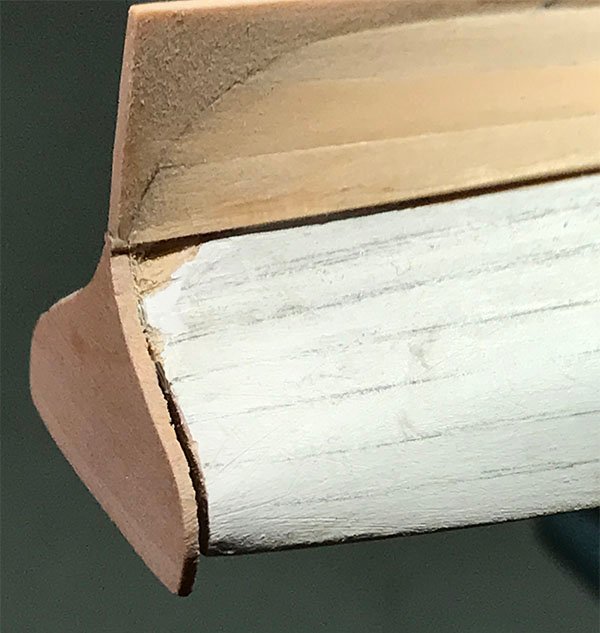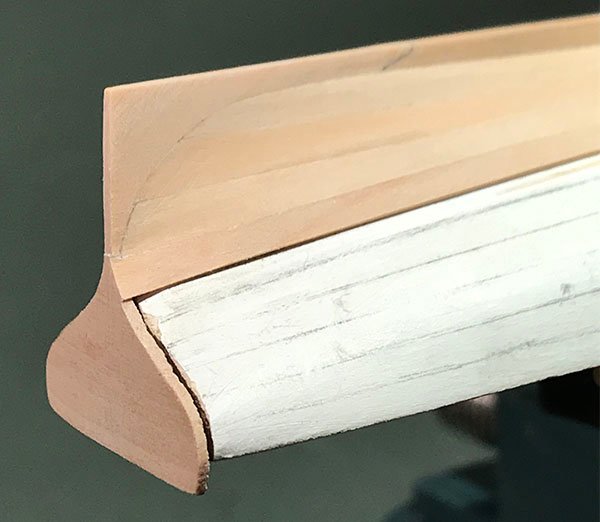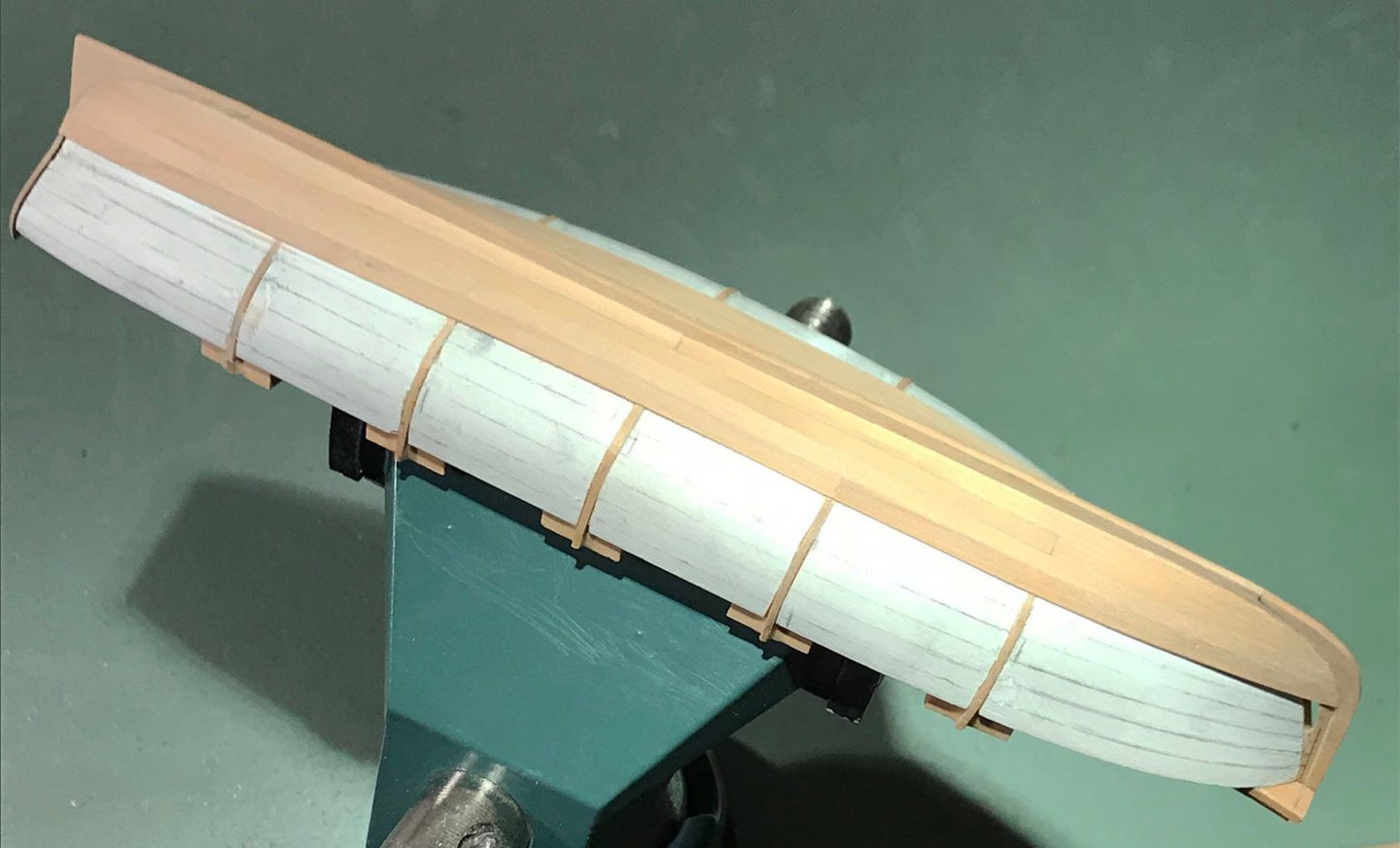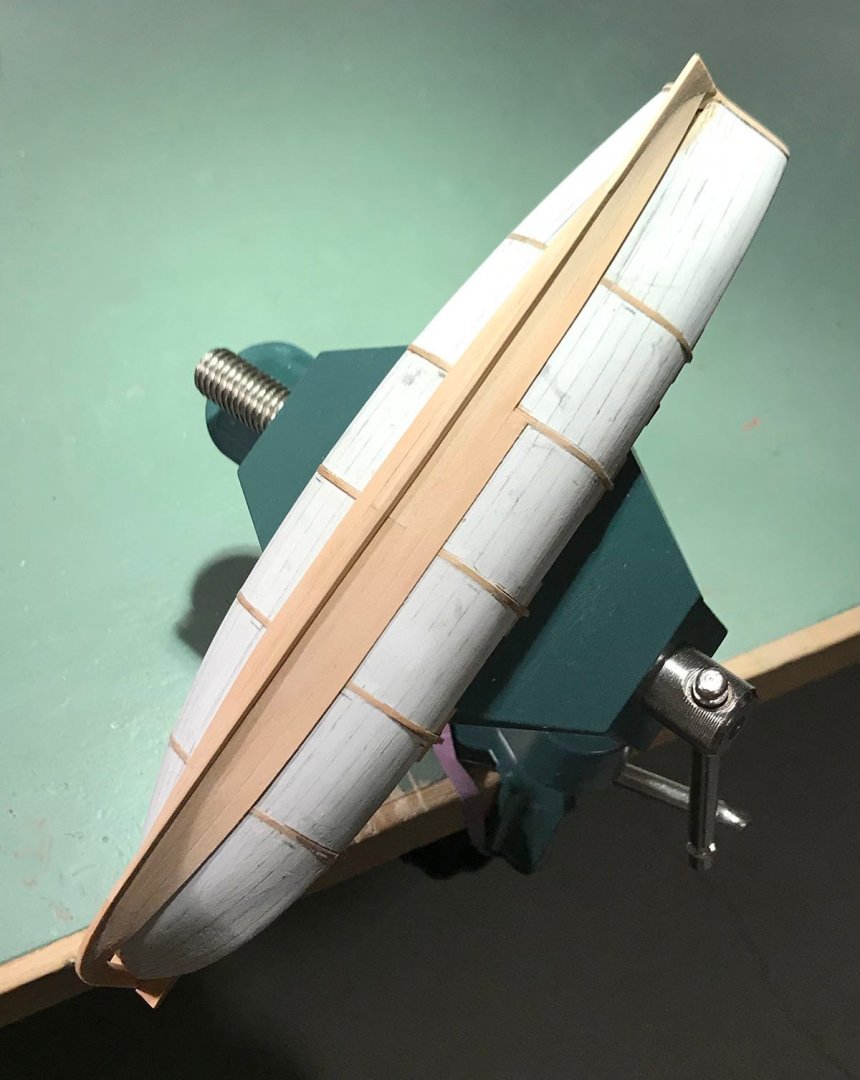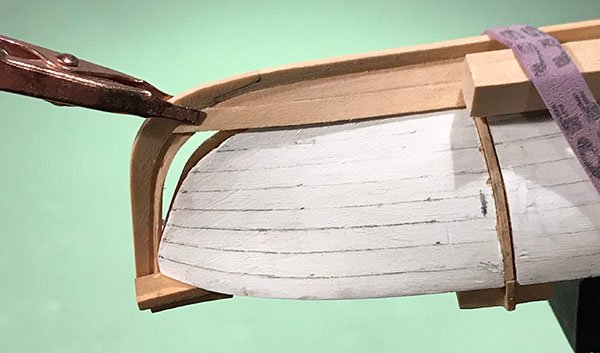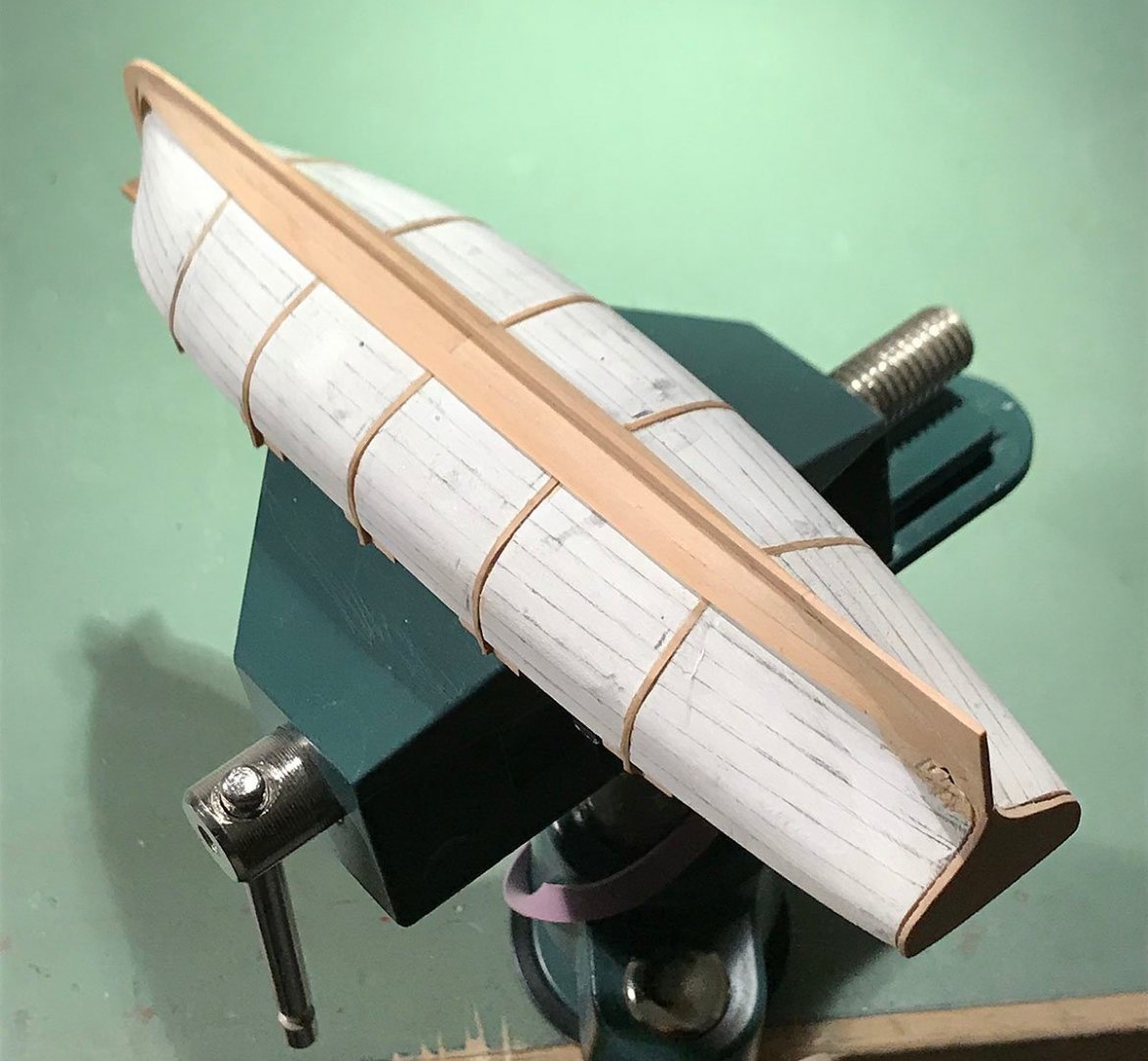-
Posts
13,373 -
Joined
-
Last visited
Content Type
Profiles
Forums
Gallery
Events
Everything posted by druxey
-
I see you did that that hard way: placing the fenders over the moldings rather than cutting the moldings to butt the sides of the fenders! The fit looks perfect.
-
And another strake completed. As these strakes now run out over the transom, they are easier to fit. On closer inspection of the plans the uppermost strake, interrupted by the tholes, is actually a wash strake. It will be fitted after the shell has been removed from the plug. This means only three more strakes to go.
- 433 replies
-
- open boat
- small boat
-
(and 1 more)
Tagged with:
-
Just catching up, Allan. Very ship-shape and Bristol fashion! Well done.
- 86 replies
-
- schooner
- effie m morrisey
-
(and 1 more)
Tagged with:
-
Five strakes down; halfway there. If progress seems slow, it is. One strake can take an hour or two to complete. Each plank has to be spiled, marked out, cut, the joints refined, the free edge smoothed and then shaped and glued. After gluing the plank often needs finessing using the hot iron and water. Once the strake is complete, it is carefully sanded almost down to the finished surface.
- 433 replies
-
- open boat
- small boat
-
(and 1 more)
Tagged with:
-
Good luck finding a new home. We'll await your return! Nice modification to those figures. It's hard to realize how small they really are.
- 2,699 replies
-
- heller
- soleil royal
-
(and 9 more)
Tagged with:
-
Yes, there is a slight concavity in the newest strake, Eberhard, but nothing extreme.
- 433 replies
-
- open boat
- small boat
-
(and 1 more)
Tagged with:
-
So, another day, another strake on each side. Today it's strake 4. The junction at stern post and transom needed care. (I think Eberhard was wondering about this.) The plank runs were arranged so that the seam between two strakes would run into this junction. Another 'have to think well ahead' strategy. I also cut away the plug for safety here. (Photo order reversed!) Yes, Maury, I wash the planks well with a wet brush and mop up excess glue before it dries. In places such as the keel/garboard junction, I also use a dental tool (elevator) shaped like a mini chisel to clean out the angle. Thanks for stopping by.
- 433 replies
-
- open boat
- small boat
-
(and 1 more)
Tagged with:
-
It's his mast-erpiece, Steven! Actually, it looks like a clip of some kind.
- 175 replies
-
- hanse kogge
- shipyard
-
(and 1 more)
Tagged with:
-
Exactly, Maury. There is very little gluing surface. Hence the occasional frame.
- 433 replies
-
- open boat
- small boat
-
(and 1 more)
Tagged with:
-
But that method means that the block cannot slip out of the line - the line would have to break first.
- 130 replies
-
- wütender hund
- hanseatic
-
(and 2 more)
Tagged with:
-
Thanks for looking in, everyone. Progress will be slow. Fitting planks that average about ⅛" wide is exacting work. You can see strake three going in in this picture.
- 433 replies
-
- open boat
- small boat
-
(and 1 more)
Tagged with:
-
Questions, questions! Alan: I almost never, ever use CA. PVA is what I'm using on this model. Eberhard: I've never really got into 3D modeling since a frustrating brush with AutoCad early in the '00's. Greg: If it were a clinker hull, it could come off any any point for inspection. I'd rather not chance it with the small gluing areas involved on a carvel hull.
- 433 replies
-
- open boat
- small boat
-
(and 1 more)
Tagged with:
-
The garboard completed both sides and pins removed, the second strake was next. In the first photo you can see two of the various hold-down strategies used. To spile planking at this scale is difficult to do the traditional way using a set of compasses. I now use Scotch brand matte removable tape. I lay a strip over the model and dot every ¼" or so. The tape is stripped off and laid on the stock (photo). The side to be joined to the existing strake is cut first and as accurately as possible. I use a sharp scalpel and ship's curve for this. The other side is cut a little wide of the marks. The plank is then fitted and fettled if necessary before refining the free edge. It is then shaped and glued into place. Once a strake is completed I sight along it to see if there is any waviness and file the edge smooth before continuing with the next strake. Now on to the second strake, port side. The process outlined above will continue until planking is completed.
- 433 replies
-
- open boat
- small boat
-
(and 1 more)
Tagged with:
-
Bob: I don't have an answer to that other than I've never wished to test many hours of work to destruction! I agree that a three-piece plug would solve the issue, but at this size the extra work involved is simply not worth it. The last strake will be added after removal from the plug. This, however, is some time off yet!
- 433 replies
-
- open boat
- small boat
-
(and 1 more)
Tagged with:
-
I love my Castroviejo corneal scissors (5)! The vintage/antique watchmakers' hand vice (2) is also a really useful tool. Haven't had as much luck with the sliding ring version; it always slips when I don't want it to! Its advantage is that it has small jaws.
-
Keith: You remind me of an anecdote about Oscar Wilde. He was holding forth at some gathering making his usual brilliant remarks, after one of which someone said, "Oh, I wish I'd thought of that!" To which Oscar replied, "You will, my dear boy, you will!"
- 433 replies
-
- open boat
- small boat
-
(and 1 more)
Tagged with:
About us
Modelshipworld - Advancing Ship Modeling through Research
SSL Secured
Your security is important for us so this Website is SSL-Secured
NRG Mailing Address
Nautical Research Guild
237 South Lincoln Street
Westmont IL, 60559-1917
Model Ship World ® and the MSW logo are Registered Trademarks, and belong to the Nautical Research Guild (United States Patent and Trademark Office: No. 6,929,264 & No. 6,929,274, registered Dec. 20, 2022)
Helpful Links
About the NRG
If you enjoy building ship models that are historically accurate as well as beautiful, then The Nautical Research Guild (NRG) is just right for you.
The Guild is a non-profit educational organization whose mission is to “Advance Ship Modeling Through Research”. We provide support to our members in their efforts to raise the quality of their model ships.
The Nautical Research Guild has published our world-renowned quarterly magazine, The Nautical Research Journal, since 1955. The pages of the Journal are full of articles by accomplished ship modelers who show you how they create those exquisite details on their models, and by maritime historians who show you the correct details to build. The Journal is available in both print and digital editions. Go to the NRG web site (www.thenrg.org) to download a complimentary digital copy of the Journal. The NRG also publishes plan sets, books and compilations of back issues of the Journal and the former Ships in Scale and Model Ship Builder magazines.




